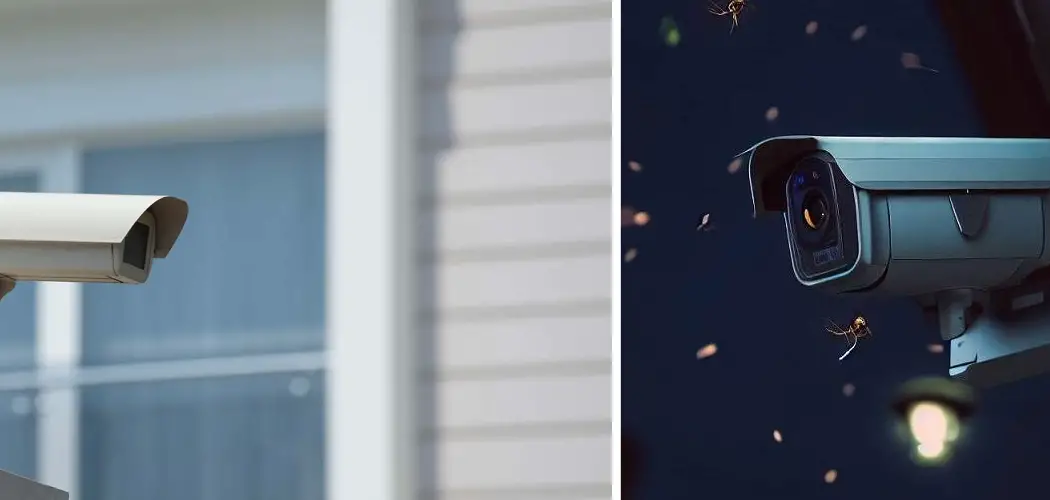Security systems, and most notably security cameras, are instrumental in safeguarding our homes and businesses. They provide an unblinking eye that watches over our properties, ensuring the safety and security of our loved ones and possessions. However, these electronic sentinels are not without their vulnerabilities. One seemingly minor but surprisingly persistent issue is the interference caused by bugs and insects.
Drawn to the infrared lights of the security cameras, these tiny invaders can obscure the lens, trigger false alarms, and generally degrade the functionality of your security system. This blog post is dedicated to addressing this issue.
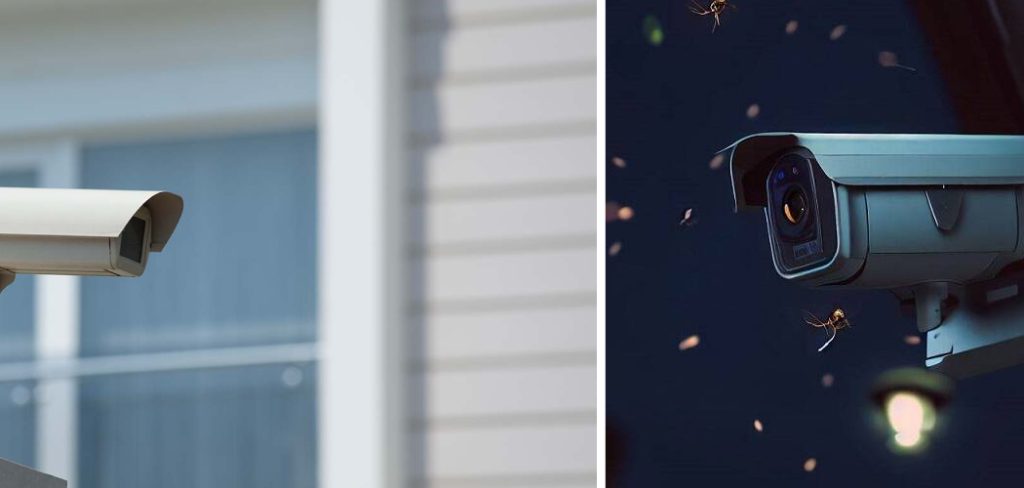
We will explore how to prevent bugs from camping on your security cameras, ensuring clear and uninterrupted surveillance. The solutions we’ll delve into range from simple, everyday preventive measures to more advanced techniques. So, keep on reading this article about how to keep bugs away from security cameras.
Understanding the Problem
Types of Bugs that Can Affect Security Cameras
Several types of bugs pose a threat to the efficiency of security cameras. Spiders, for instance, are attracted to the warmth the cameras generate and may weave their webs around them, obstructing the camera lens. Similarly, moths and bugs may be drawn to the infrared night lights and can cause false motion alerts.
How Bugs Can Disrupt Camera Operation
Bugs can significantly disrupt the operation of security cameras. If a spider web or a cluster of bugs obscure the camera’s lens, it can distort the image quality, making it difficult to identify potential security threats. Furthermore, bugs attracted to the camera’s infrared light could trigger unnecessary motion sensors, leading to false alarms.
Common Challenges Faced by Camera Owners
Camera owners commonly face issues such as false motion detection alerts caused by bugs, poor image quality due to bug interference, and difficulty in maintaining clean lenses. Additionally, the presence of bugs can lead to damage over time, as some insects may chew on the camera wires, causing a need for more frequent replacements or repairs.
Can You Keep Bugs Away from Security Cameras?
Security cameras are essential for keeping our homes and businesses safe, but what happens when these cameras attract unwanted guests – bugs? Not only are they a nuisance, but they can also obstruct the camera’s view and compromise its effectiveness. Fortunately, there are simple and effective ways to keep bugs away from security cameras.
One option is to place the camera in a location that is not easily accessible to bugs. Installing a bug zapper near the camera can also help keep pesky insects at bay. Regular cleaning and maintenance of the camera can also prevent the accumulation of dirt and debris, which can attract bugs. By taking these measures, you can ensure that your security cameras remain bug-free and always ready to capture any suspicious activity.
Why Should You Keep Bugs Away from Security Cameras?
When it comes to protecting your property, security cameras are an undeniable asset. They help monitor events, deter potential burglars, and provide evidence if a crime does occur. However, it is important to remember that these nifty tools are not immune to the pesky bugs we all encounter in our daily lives. In fact, bugs can cause all sorts of damage to security cameras, such as blocking the view or disrupting the signal altogether.
As such, staying on top of keeping bugs away from your cameras is critical. So whether it means getting regular maintenance or investing in bug repellent, taking the extra steps to ensure your cameras remain in top shape will make all the difference in the long run.
Location and Placement for Your Camera to Avoid Bugs
Selecting the Right Location for Your Camera
To reduce the chances of bugs affecting your security camera, it is essential to choose an appropriate location for installation. Avoid placing cameras near outdoor lights or other heat sources, as this can attract insects. Additionally, ensure that there are no plants or bushes nearby, as they can also provide a potential habitat for bugs.
Consider the Placement of Your Camera
The placement of your security camera can also play a significant role in keeping bugs at bay. Ensure that the camera is not positioned near any potential entry points for bugs, such as open windows or doors. Additionally, it is recommended to mount the camera on a smooth surface to prevent insects from crawling onto it.
Regular Maintenance and Cleaning
Routine maintenance and cleaning are crucial for keeping bugs away from your security cameras. Regularly check and clean the camera lenses to remove any webs or debris that may have accumulated. Additionally, consider using bug-repellent sprays or solutions around the area where the cameras are installed to prevent insects from nesting.
Types of Bugs Commonly Found on Security Cameras
Security cameras often become an unwilling host to a variety of bugs. Understanding the types of bugs that are commonly found on security cameras can help in finding the right strategies to keep them at bay. Let’s delve into some of these unwelcome guests.
Spiders
Spiders are attracted to security cameras due to the warmth they generate, often using them as a platform to weave their intricate webs. These webs can obstruct the camera’s lens, leading to a distorted image quality.
Flies
Flies drawn by the light emitted by the cameras can become a nuisance by obscuring the lens or triggering false motion alarms. They can also lay eggs around the camera, leading to a more persistent infestation.
Moths
Similar to flies, moths are attracted to the infrared lights of the cameras, particularly during the night. They can flutter around the lens, obstructing the view and triggering false alerts.
Gnats
Gnats, while smaller, can create similar problems as their larger counterparts. They are drawn to lights and can swarm in large numbers, potentially obscuring the camera’s view.
Beetles
Beetles can pose a unique threat to security cameras. Besides obscuring the lens, some species have been known to chew on wires and other components, potentially leading to more serious damage and necessitating expensive repairs or replacements.
How to Keep Bugs Away from Security Cameras in 7 Easy Ways
1. Use Insect Repellents
One straightforward way to keep bugs away from your security cameras is by using a good-quality insect repellent. Many chemical and natural insect repellents are available in the market that can keep the bugs at bay. You can use sprays, wipes, or even diffusers around your cameras to deter insects from coming near them. However, make sure to choose a repellent that is safe for the environment, humans, and animals around your property.
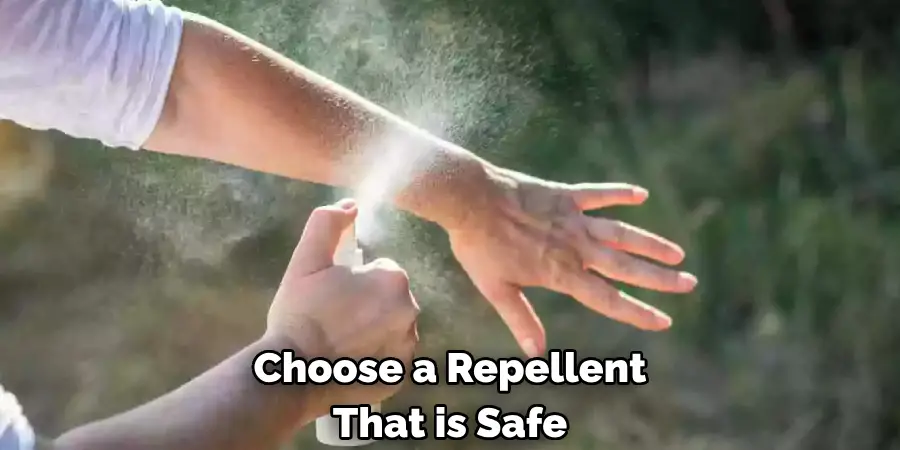
2. Keep Cameras Clean
Bugs are attracted to security cameras because they find the dust, grime, and debris on them as an excellent breeding ground. Cleaning your cameras regularly can help remove such elements and discourage bugs from nesting. Use a gentle cleaning solution and a soft brush to clean the body and lenses of your cameras. Make sure to switch off the power before cleaning and avoid using too much water near the wiring and electrical components.
3. Install Bug Screens
Installing bug screens around your security cameras is a sure-shot way to keep bugs away. You can buy specialized screens that fit the size and shape of your cameras or make some custom ones using mesh wire or netting. These screens prevent bugs from touching the optics and wiring of your cameras, keeping them in good working condition.
4. Choose Suitable Camera Locations
Sometimes, the location of your security cameras can also attract bugs. If you’ve installed them in places with abundant light, moisture, or vegetation, bugs are bound to gather. Choosing appropriately elevated spots or areas with fewer bug-attracting elements can help minimize the bug infestation around your cameras.
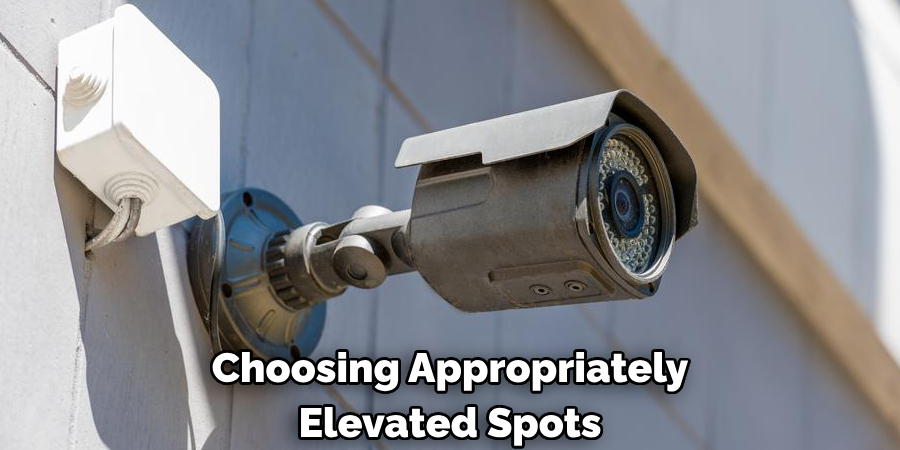
5. Contact Pest Control Professionals
If the bug infestation around your security cameras is severe and none of the above methods work, consider calling professional pest control services. Pest control companies use specialized tools and techniques to get rid of bugs and prevent their re-entry. They can also provide customized solutions based on the size and type of your property and the local bug population.
6. Seal Gaps and Cracks
Bugs can make their way into your property through cracks, gaps in walls and floorings, or crevices in the ceilings and corners. To prevent bugs from getting to your security cameras, go around the building and seal any such openings with caulking compounds or bug-proof sealants.
7. Make Use of Natural Deterrents
Using natural elements like white vinegar, strong-smelling plants, and essential oils can be an inexpensive and safe way to repel bugs from your property. Place a few drops of lavender or tea tree oil at the base of your security camera, and make sure to change it regularly. You can also plant marigolds, mint, catnip, and other such plants in the vicinity of your cameras to keep bugs away.
That’s it! You’ve now learned how to keep bugs away from security cameras. Following these tips can help you maintain your security system’s optimal performance and ensure that no unwanted visitors are caught on camera.
5 Considerations Things When You Need to Keep Bugs Away from Security Cameras
1. Location
The first thing you need to consider when trying to keep bugs away from your security cameras is the location of the cameras. If possible, try to place the cameras in an area that is not prone to bug infestations. This may include placing the cameras high up on a wall or in a corner of a room.
2. Covering the Camera
Another way to keep bugs away from your security cameras is to cover the camera with a physical barrier. This can be done by placing the camera in a housing with small holes or by using tape or other materials to cover the camera’s lens.
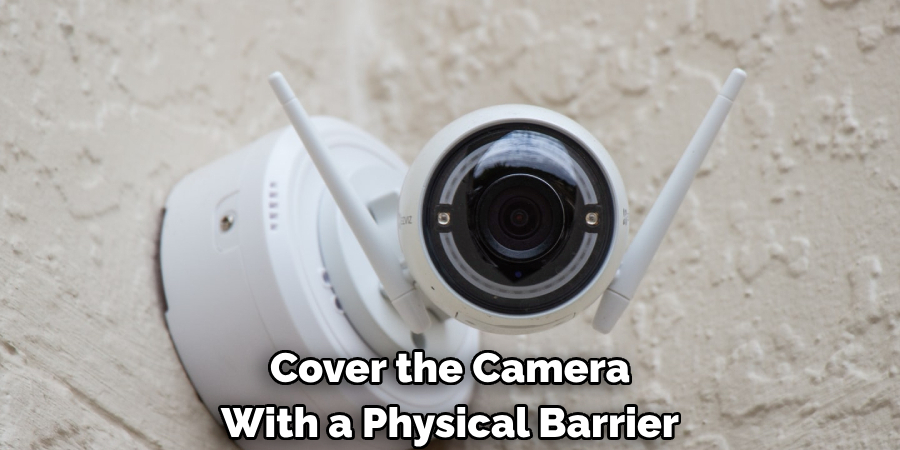
3. Use Insect Repellent
If you are unable to remove or cover your security cameras physically, you can also try using insect repellent. Many different types of insect repellents are available, so be sure to choose one that is safe for use around electronics. You may need to apply the repellent directly to the camera or use it in the area around the camera.
4. Keep the Area Clean
Bugs are attracted to dirty areas, so keeping the area around your security cameras clean is important. This means vacuuming regularly and dusting often. You should also avoid leaving food or other attractants near the cameras.
5. Call an Exterminator
If you have tried all of these methods and are still having problems with bugs near your security cameras, you may need to call an exterminator. An exterminator will be able to identify the type of bug you are dealing with and provide you with specific instructions on how to get rid of them. They may also be able to provide additional methods for keeping bugs away from your security cameras in the future.
Benefits of Bugs Away from Security Cameras
Bugs may be small and often considered a nuisance, but they play a vital role in our ecosystem. In fact, some scientists believe that we couldn’t survive without them! However, when it comes to security cameras, bugs can cause major problems. From obstructing the lens to triggering false alarms, these tiny creatures can cause big headaches.
That’s where bugs away technology comes in. By using specialized cameras and software, bugs are detected and removed from the footage before it ever reaches the viewer. This ensures that your security system is running smoothly and helps protect the bugs by keeping them out of harm’s way. So whether you’re a business owner looking to protect your assets or a homeowner wanting to keep your loved ones safe, bugs away technology is a win-win solution.
Some Common Mistakes People Make When Trying to Bug Away from Security Cameras
Today, security cameras are everywhere. From banks to shopping malls, they are installed to provide security and monitor activities. However, some people try to evade the eyes of the camera for mischievous reasons, but they make common mistakes that make it impossible to escape detection. First, people tend to cover their faces with clothing, hats, and glasses, forgetting that cameras are designed to capture movements and shapes, not faces.
Second, trying to sneak too quickly past the camera’s field of view makes it more obvious that you are up to no good. Lastly, standing close to the camera’s line of sight or moving around within the same area is also a common mistake that people make. If you want to avoid being caught on camera, be sure to avoid these mistakes and look for areas of less coverage where you can move around unnoticed.
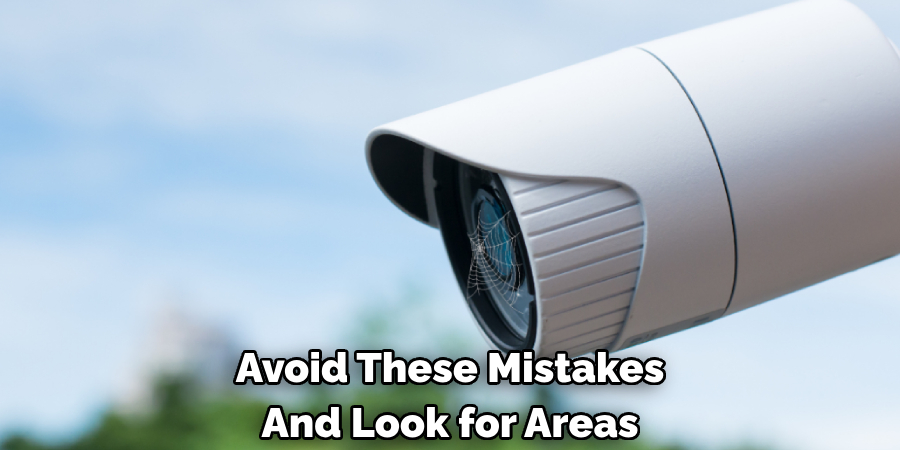
Different Types of Insect Repellent You Can Use Around Your Security Cameras
When it comes to keeping bugs away from your security cameras, insect repellents are one of the most effective ways to deter them. Here are some common types of insect repellent that you can use:
Citronella
This natural oil is extracted from certain plants and has a strong smell, which bugs find unpleasant. You can apply citronella directly to your security camera or use it around the area.
Neem Oil
Neem oil is made from a plant that has insect-repelling properties. You can spray neem oil around the base of your security cameras and in their immediate vicinity to keep bugs away.
Diatomaceous Earth
This powdery substance is made up of microscopic shells that can be sprinkled around the area to prevent bugs from entering.
White Vinegar
White vinegar has a strong smell, which is unpleasant to many insects. You can use this natural repellent by spraying it around your cameras or mixing it with water and spraying it on them directly.
Using these insect repellents in conjunction with other strategies, such as keeping the area around your camera clean and covering the lens, can help ensure that bugs stay away from your security system.
How Regular Maintenance of Your Security Cameras Can Help Prevent Bugs From Entering
Regular maintenance of your security cameras plays a crucial role in keeping bugs at bay. When the equipment is regularly cleaned and inspected, potential openings or structural weaknesses that may allow bugs to enter are identified and resolved promptly. Dirt and grime can also attract bugs, so keeping the cameras clean prevents these pests from being attracted to the devices.
Furthermore, regular maintenance may include the application of insect repellents such as citronella or neem oil, creating an additional layer of protection against bugs. By integrating regular maintenance into your camera upkeep routine, you can ensure the longevity of your security equipment and reduce the likelihood of insect-related disruptions.
The Role of Professional Exterminators in Keeping Bugs Away From Security Cameras
Professional exterminators play a pivotal role in maintaining the integrity of security camera systems by managing and preventing bug infestations. With a deep understanding of insect behavior, life cycles, and habitats, exterminators can effectively deter bugs from nesting near or within the cameras. They use industry-specific tools and eco-friendly pesticides that are safe for electronics yet potent against insects. Regular inspections and treatments from a professional exterminator can mitigate the risk of recurring infestations, preserving the functionality of the security cameras over time. Thus, the role of an exterminator extends beyond immediate pest removal, as they provide sustainable, long-term solutions to keep bugs away from security cameras.
Environmental Adjustments
Adjusting Lighting to Deter Bugs
Bugs are notorious for being attracted to light sources. To deter them, consider reducing the illumination around your security cameras, especially during the night when bugs are most active. Use low-wattage lights, or opt for bug-repellent light bulbs. In cases where lighting can’t be significantly altered, consider moving the light source further away from the camera.
Using Motion-Activated Lighting
Motion-activated lighting is an excellent choice for those wanting to minimize bug interference. These lights only turn on when they detect movement, creating less of a constant attractant for bugs. This strategy not only reduces the likelihood of insects gathering around your security cameras but also saves energy.
Consideration of Weather Conditions
Weather conditions can have a significant impact on bug activity. Warmer temperatures and increased humidity often result in heightened insect activity. During such times, it might be necessary to increase the frequency of lens cleaning and use more bug-repellent solutions. Also, consider the placement of your camera in relation to the prevailing wind direction – strong winds can blow insects towards or away from your camera.
Advanced Bug-Proofing Techniques
Sealing of Entry Points
As previously mentioned, regular maintenance and cleaning can identify entry points that need to be sealed. These openings may include cracks or crevices in the camera housing, gaps around wiring and cords, or vents used for ventilation. By sealing these areas using caulk or other sealants, you prevent bugs from entering the inside of your security cameras. Be sure to use sealants that are safe for electronics and do not interfere with the camera’s functionality.
Creating Physical Barriers
Physical barriers can also be used to prevent bugs from accessing your security cameras. These may include installing wire mesh around the devices or placing insect-repellent plants near the cameras’ base. By creating these obstacles, you make it more difficult for bugs to reach the cameras, reducing their presence and potential damage.
Future Trends in Bug-Resistant Security Cameras
As technology advances, so do the features and capabilities of security cameras. In the near future, we can expect to see bug-resistant cameras that incorporate built-in repellents or advanced materials and designs to deter bugs from entering. Some manufacturers are already experimenting with ultrasonic repellent technology – using high-frequency sound waves that are unpleasant to insects but inaudible to humans.
With the rise of smart home technology, we can also expect to see more integration between security cameras and other devices, such as motion-activated insect-repellent lighting or weather sensors that can adjust camera settings based on environmental conditions. These advancements will not only improve bug resistance but also enhance the overall functionality and convenience of security cameras.
Eco-Friendly Bug Control Measures
As we become more aware of the impact of traditional pesticides on the environment, eco-friendly bug control measures are gaining popularity. These methods use natural ingredients or alternative strategies to repel bugs without harming the ecosystem. Some options include using essential oils, such as peppermint or eucalyptus, as natural insect repellents or utilizing traps that capture and release insects safely back into their natural habitat.
In addition to being environmentally friendly, these methods may also be safer for pets and children who may come into contact with security cameras. As more people prioritize sustainability and conscious consumption, eco-friendly bug control measures are likely to become the norm in the future of security camera maintenance.
Conclusion
Bugs can not only damage your security cameras but also compromise their effectiveness. Therefore, taking measures to prevent bug infestation around your cameras should be a routine task. The methods mentioned above – using insect repellents, keeping cameras clean, installing bug screens, choosing suitable locations, and seeking professional help – can collectively help keep your cameras bug-free. Investing a little time and effort in bug prevention ensures your security cameras function efficiently and keep your home and office safe and secure. Thanks for reading our post about how to keep bugs away from security cameras.

